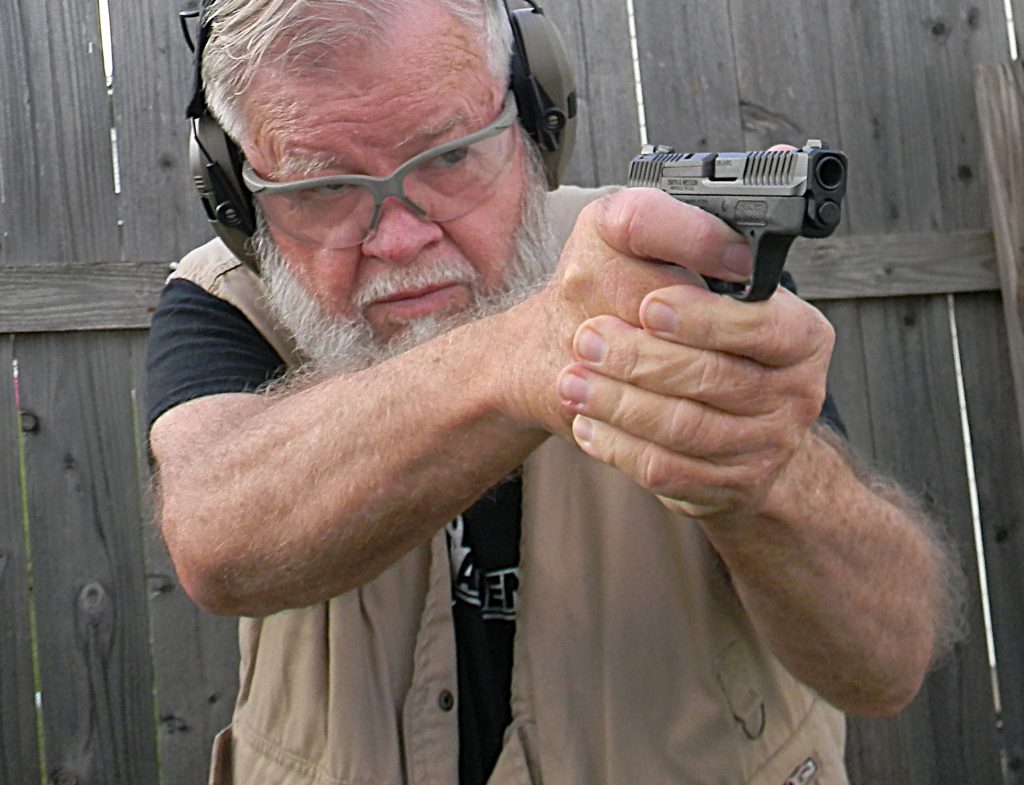
By R.K. Campbell | Contributing Editor
Smith & Wesson’s recent introduction of the Bodyguard 2.0 is a little bit of a surprise.
The pistol isn’t similar at all to the DAO hammer-fired predecessor. The original Bodyguard is not one of my favorites and we will leave it at that. I understand the concept of the pocket gun, the get-off-me gun and the hideout. Most have too much compromise for me.
The Bodyguard 2.0 is another thing altogether. This compact little Smith & Wesson 2.0 has the appearance of a Military & Police 9mm. It is, in many ways, a miniaturized M&P. Ergonomics and handling are much superior to any handgun in this size and weight class of my experience.
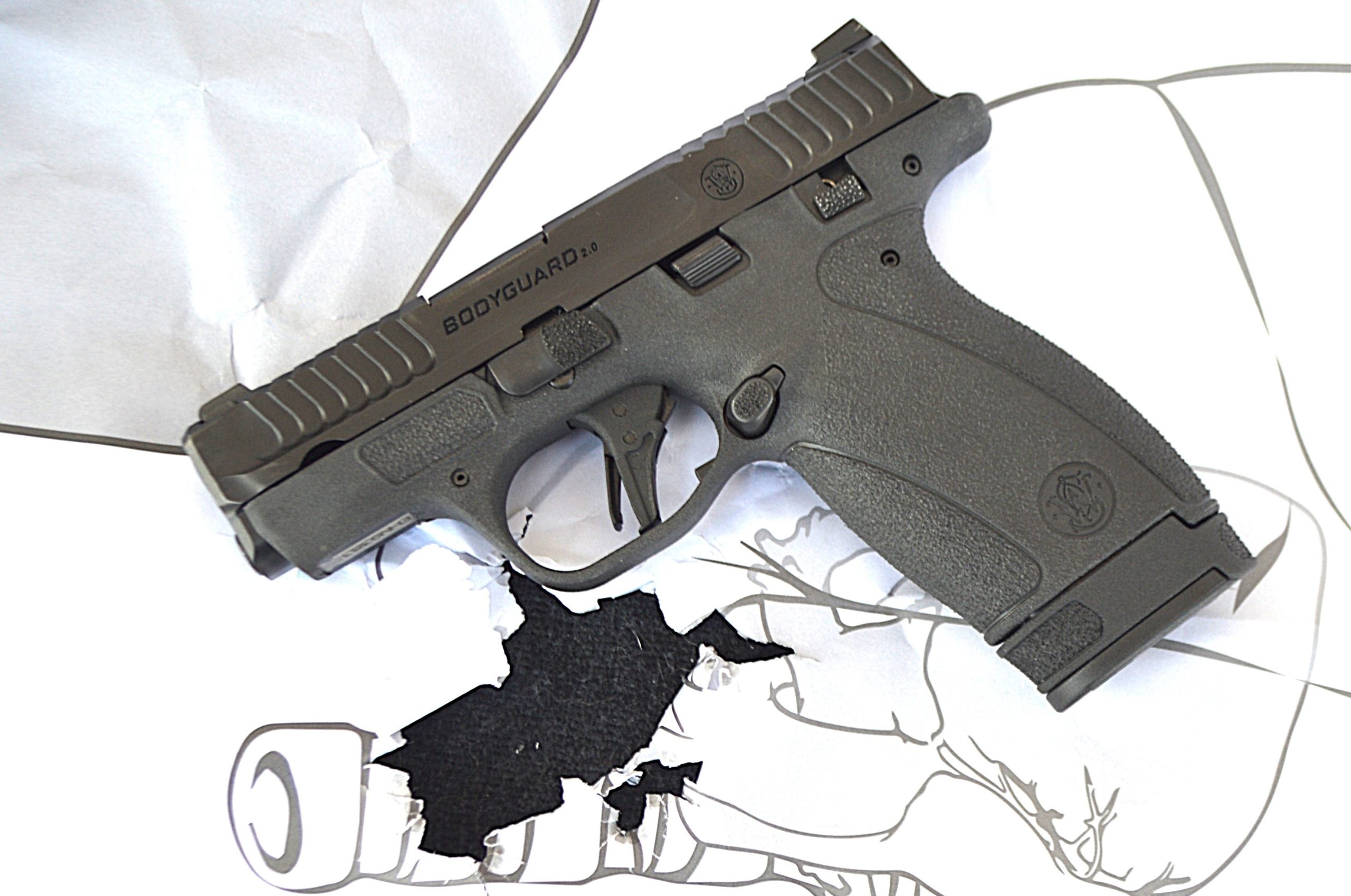
The striker-fired Bodyguard 2.0 is a blowback, not locked breech pistol with a polymer frame. It features a hand filling grip that fits most hands well. The balance of adhesion and abrasion in the grip is excellent. The pistol is available in both a manual safety and without safety versions. I prefer a manual safety on a carry gun and this pistol provides.
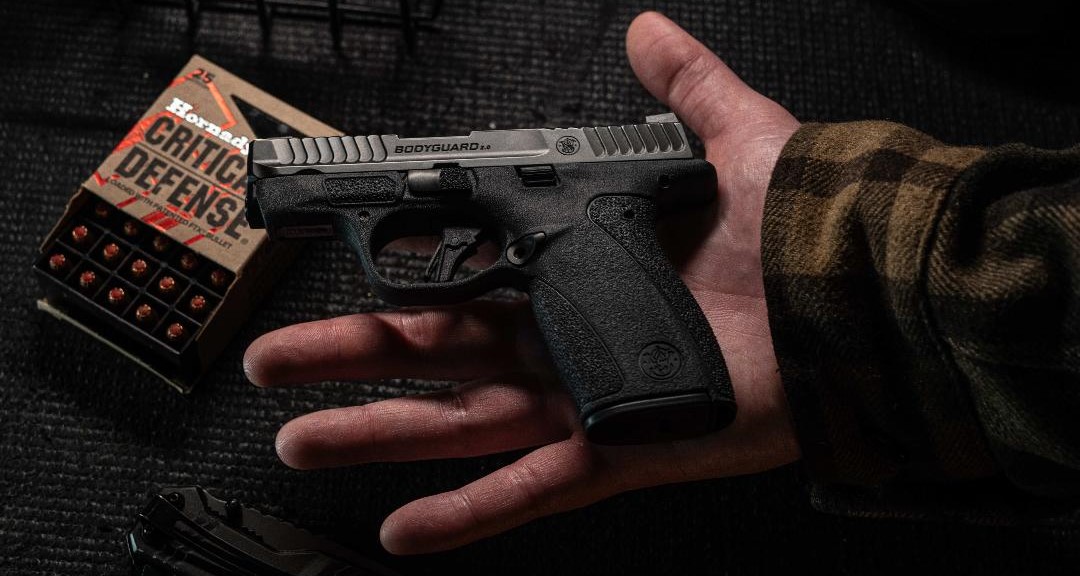
This little .380 ACP pistol sports a magazine capacity of ten rounds in the flush fit magazine and twelve in the extended baseplate version. A tritium front sight and a good trigger action are among the pistol’s advantages. Other advantages include wave type cocking serrations as found on many of Smith & Wesson’s Military & Police models. Plenty of gripping surface is there for good control when manipulating the slide.
The polymer grip frame features a nice S-curved and extended tang for a high firing grip. The balance of adhesion and abrasion in the grip are good with a modest palm swell. This pistol’s controls—an ambidextrous safety, a single slide lock, and reversible magazine release—are all positive in operation. While the safety isn’t very large, it features serrations that make operation sure and fast. The trigger action breaks at just under four pounds and clean for a striker fired pistol. This makes for good control, essential when pulling a trigger action against a light handgun. A safety lever rides in the trigger face.
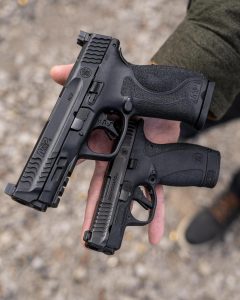
The pistol features forward and rear cocking serrations, which ride high almost over the top of the slide. This type of serration offers plenty of purchase. The sights are a wide open rear with serrated rear face and a low riding front sight with a tritium center. Disassembly is similar to the full size M&P save that the ejector must be pressed out of the way before the take down lever is turned, a compromise in such a small handgun. Disassembly isn’t difficult at all. Press the ejector down out of the way, flip the take down lever down, and run the slide off of the frame. Then pluck the recoil spring and guide out and remove the barrel. Re-assembly isn’t difficult.
Don’t be fooled by the .380 ACP chambering. Although the .380 is no powerhouse, one cannot discount its purpose, to be there when it is needed. My personal minimum preference for personal defense is the .38 Special +P. Just the same the .380 is better than nothing and with a lightweight pocket pistol at least you are not violating the first rule of a gunfight- you must have a gun.
The Bodyguard 2.0 is supplied with two magazines, one a ten-rounder and the other, which holds a dozen cartridges. If you don’t carry a spare magazine (you should), the Smith & Wesson magazines are all metal and reliable. The pistol cannot be faulted on human engineering. With a slide that rides lower in the hand than other pistol in its size class I have test fired recoil is modest and muzzle flip limited. For shooters with various problems with hand strength the Bodyguard makes a reasonable choice- better than anything else in this size class I have handled at the risk of repeating myself.
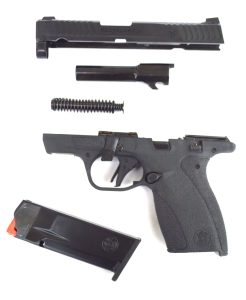
The test pistol has been fired extensively by myself and other interested shooters. My personal round count is nearing 400 cartridges, other shooters at the range have added about 200 more rounds. There was a single tie up early on which may have been shooter error or it may have been a break in. Other than this it has been smooth sailing with the Bodyguard 2.0, and I have stretched the envelope and fired the piece well past 20 yards. The practice sessions have been draw and riddle the target, sometimes with a cranium hit and other types a full magazine into the chest. Not that a threat will stand still while you pepper them but you learn control with rapid fire. The Bodyguard 2.0 has that control. In contrast to many small pistols the Bodyguard 2.0 actually handles like a big gun, feels like a big gun, and offers a positive firing experience.
As for absolute accuracy- the least important part of the requirement for a defensive pistol- the Bodyguard did OK in perspective. Most of the ammunition expended has been 95 grain FMJ ammunition. The pistol is controllable with cranial hits and center chest hits not difficult to 7 yards. At 15 yards I settled into a solid benchrest firing session with the MTM Caseguard K Zone shooting rest. I took every advantage for accuracy. I fired Fiocchi’s 95 grain FMJ and also their 90 grain XTP hollow point. An average five shot group ran from 3 to 4 inches. That’s good, even very good for a lightweight handgun.
Carry loads
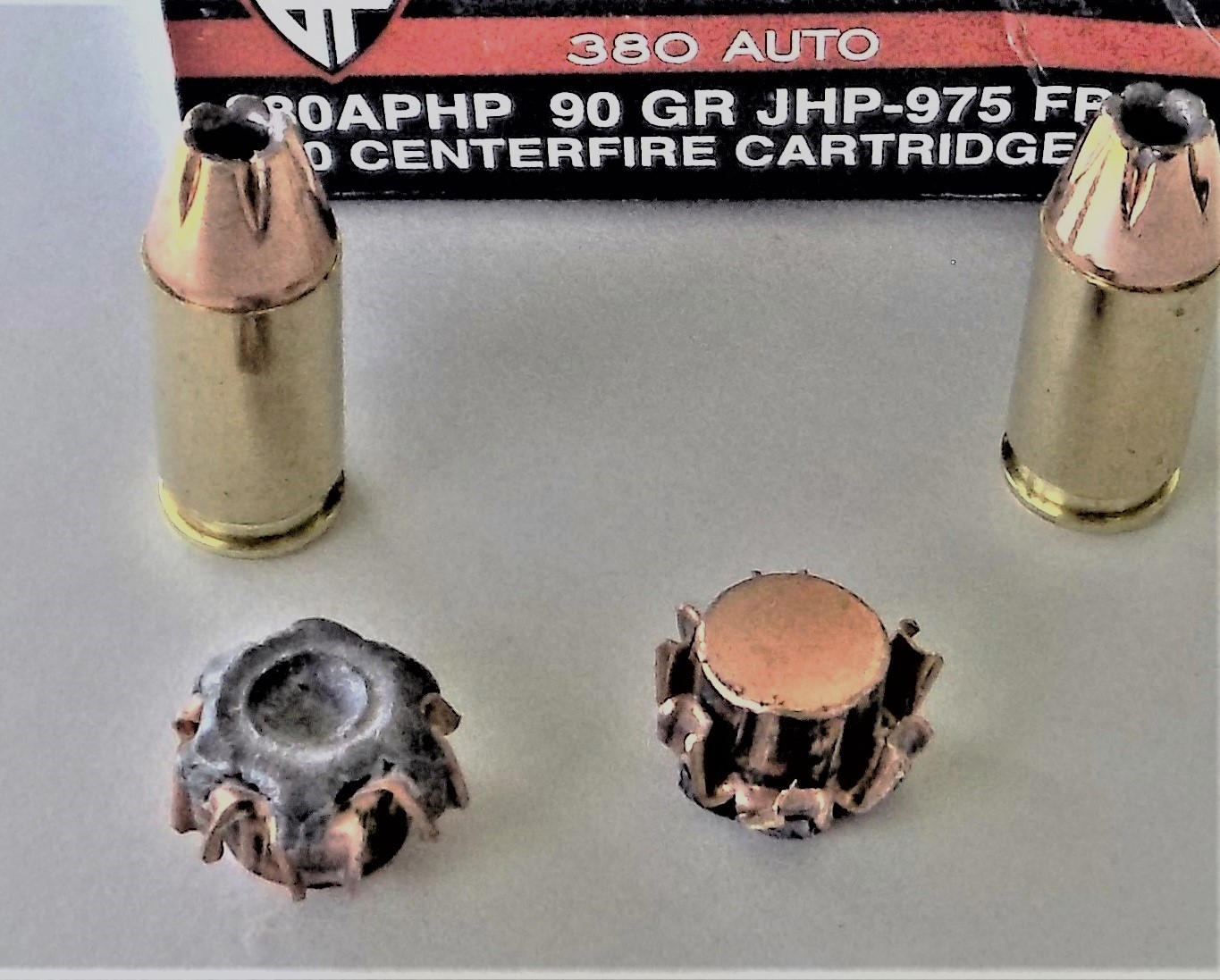
The .380 ACP doesn’t have enough power to offer both good expansion and penetration so compromise is in order. The Hornady Critical Defense loading offers good penetration and expansion. Other choices would include the Fiocchi 90 grain XTP load.
Carrying the pistol
This isn’t difficult at all. The Galco TuckNGo inside the waistband holster with tuckable option is ideal for concealed carry. The pistol is light on the lip or if carried in appendix carry. The Galco holster offers a good balance of speed and retention.
Specifications
Action: Semi-automatic, blowback, striker fired
OAL: 5.5 in.
Height: 4.0 in.
Width: .88 in.
Weight: 10.0 oz.
BBL: 2.75 in.
Capacity: 10/12 rounds
Frame: Polymer
Sights: Fixed, U Notch Rear/Tritium Front
Trigger: 3 lbs 10 oz.
Warranty: Limited Lifetime
Website: Smith-Wesson.com
Made in USA



